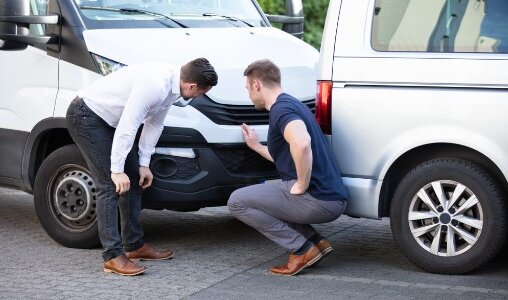PROVING VICARIOUS LIABILITY IN CAR ACCIDENTS
Many times when a commercial vehicle, such as a truck, is involved in an accident the issue of ultimate liability if the driver was at fault will also need to consider whether the company that owns the truck may share in that liability. This consideration is the essence of the legal doctrine of vicarious liability. This concept has also been referred to as respondeat superior.
WHAT IS VICARIOUS LIABILITY?
California law has long held that when one person serves as the agent of another, including working as an employee, then the person or company that directs the services of that agent can share in responsibility if the agent commits an act of negligence. The basis for this negligence is that the employer’s business can create risks as a part of doing business, and that it would therefore be unfair for the employer to be able to avoid responsibility for any injury that happens during the conduct of that business.
California courts have established that the need to provide for a better assurance that victims of negligent or even intentional acts committed by employees or agents can recover damages requires those whom the employee or agent serves share in liability. What this also means is that even employee acts that are purposeful and not authorized by the employer, the employer may nonetheless still be liable for the employee’s acts.
WHO CAN BE HELD VICARIOUSLY LIABLE IN A CAR ACCIDENT?
Under the proper circumstances an employer may be held liable for the negligent actions of their employee. In order for this to happen, the following must be true:
- The employee was operating within the normal scope of their employment (i.e. they were working at the time of the accident, not out joyriding in a company car)
In some cases a parent may also be held vicariously liable for damages caused by their child if they are under the age of 18.
HOW DO YOU PROVE VICARIOUS LIABILITY?
In order to prove that you have a case for vicarious liability, you must be able to prove the following:
- That the employee and the employer had an employment agreement that put the employee under the direction or control of the employer
- That the employer had the authority to control the employee’s actions while on the job
- That the employee was working within the scope of their employment at the time of the accident
GET STARTED TODAY
If you have been injured in your property or your person in an accident involving a commercial vehicle, your personal injury attorney can help you to determine what other possible parties aside from the driver may share in responsibility for what happened. California law allows for all defendants to be held liable for their share of fault if you can establish liability, so it is important for you and your attorney to identify all necessary defendants if a lawsuit becomes necessary. Contact Casper, Meadows, Schwartz & Cook today to get started!

